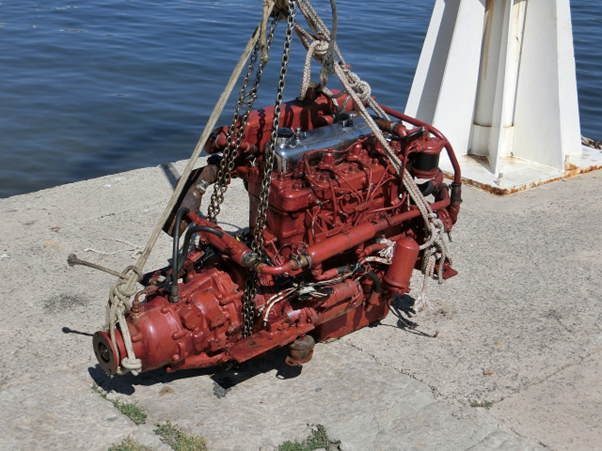Marine engines are the heart and soul of any vessel navigating the vast oceans. From humble fishing boats to colossal cruise ships, these engines power the maritime industry, enabling transportation, commerce, and exploration across the globe. Understanding the basics of marine engines is crucial for anyone involved in maritime activities, whether as a sailor, engineer, or enthusiast. In this comprehensive guide, we’ll delve into the fundamental principles, components, and maintenance aspects of marine engines.
The Functionality of Marine Engines:
At its core, a marine engine operates similarly to its terrestrial counterparts, but with unique adaptations to withstand the harsh marine environment. The primary function remains the conversion of fuel into mechanical energy, which propels the vessel forward. Unlike land vehicles, marine engines must contend with factors such as saltwater corrosion, constant exposure to moisture, and the need for reliable operation over extended periods.
Types of Marine Engines:
Marine engines come in various types, each suited to specific vessels and applications. The most common types include:
Inboard Engines: Positioned within the hull of the vessel, these engines provide propulsion directly to the propeller shaft.
Outboard Engines: Mounted externally on the transom, outboard engines are versatile and widely used in smaller boats due to their ease of maintenance and maneuverability.
Stern Drive Engines: Combining aspects of both inboard and outboard engines, stern drives feature an engine mounted inside the boat with a drive unit extending through the transom.
Diesel Engines: Known for their reliability and fuel efficiency, diesel engines are prevalent in larger vessels and commercial ships, offering high torque and durability.
Gasoline Engines: Commonly found in smaller recreational boats, gasoline engines provide ample power and are relatively easy to maintain.
Check out one of the best Caterpillar Diesel Engines here.
Components of Marine Engines:
Understanding the key components of a marine engine is essential for troubleshooting issues and performing routine maintenance. These components include:
Engine Block: The foundation of the engine, housing the cylinders, pistons, and crankshaft.
Cylinder Head: Covers the top of the cylinders, containing the intake and exhaust valves and the combustion chamber.
Fuel System: Delivers fuel to the engine, including components such as fuel pumps, injectors (in diesel engines), and carburetors (in gasoline engines).
Cooling System: Prevents overheating by circulating coolant through the engine block and dispersing excess heat via a heat exchanger or raw water cooling system.
Lubrication System: Ensures proper lubrication of moving parts to minimize friction and wear, comprising an oil pump, filter, and various channels for oil distribution.
Exhaust System: Removes combustion byproducts from the engine and expels them safely overboard, typically through a series of pipes and a muffler.
Electrical System: Provides power to essential components such as the starter motor, ignition system, and onboard electronics.
Maintenance and Care:
Proper maintenance is vital for the longevity and reliability of marine engines, especially considering the demanding conditions they operate in. Key maintenance tasks include:
Regular Inspections: Conduct visual inspections for signs of wear, corrosion, or leaks, paying close attention to belts, hoses, and gaskets.
Fluid Checks: Monitor oil levels and coolant levels regularly, topping up as necessary and replacing fluids according to the manufacturer’s recommendations.
Fuel Management: Use clean, high-quality fuel and regularly inspect fuel filters and lines for any contaminants or blockages.
Cooling System Maintenance: Clean and flush the cooling system periodically to remove sediment and prevent clogs that could lead to overheating.
Winterization: Properly winterize the engine if the vessel will be stored in cold climates, including draining water from the cooling system and adding antifreeze as necessary.
Professional Servicing: Schedule routine service appointments with qualified technicians to perform comprehensive inspections and address any issues proactively.
Conclusion:
Marine engines are marvels of engineering that power the maritime industry, enabling vessels of all sizes to traverse the world’s oceans with efficiency and reliability. By understanding the basics of marine engines, sailors, engineers, and enthusiasts alike can gain insight into the inner workings of these essential components and ensure their proper care and maintenance. With regular attention and proper upkeep, marine engines can provide years of dependable service, facilitating safe and enjoyable experiences on the water for generations to come.



